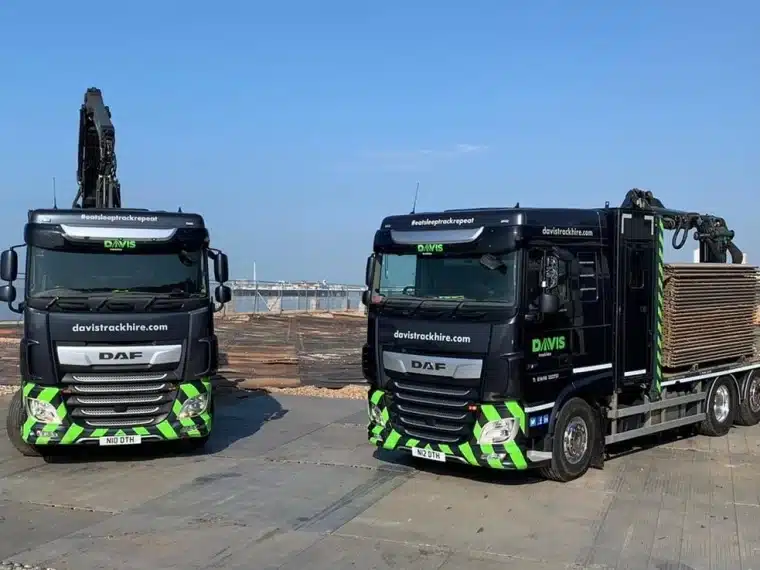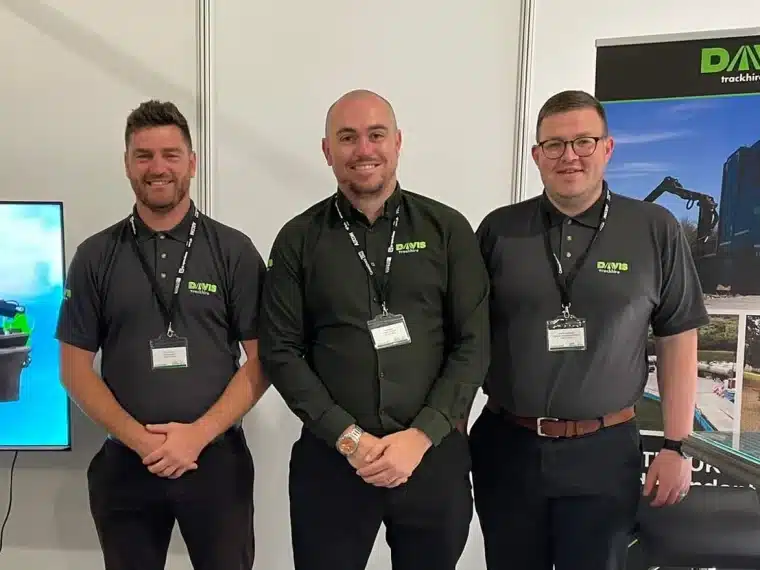Trackway for aircraft recovery at Leeds Bradford Airport
Trackway for aircraft recovery
At 3.30 pm on Friday the 20th of October 2023, Davis Trackhire received a telephone call from Leeds Bradford Airport. They tentatively called to request our support with a trackway for aircraft recovery. A Boeing 737-800, weighing over 50 tonnes, had moved off the runway and become stuck in the ground.
To prevent the airport from being closed for a considerable time, we had to quickly complete this job. We received another call at 4 pm confirming the requirement for our services. Phill Wright, Davis Trackhire’s UK Operations Manager, began travelling to the airport. On the way, we made calls to our logistics department to have additional crews and panels on standby. At this stage, the number of panels or crews needed was unknown until we conducted a site assessment.
The plane had veered to the side, off the runway. The wheels had sunken approximately 2ft into the ground. After assessing the site, we mobilised two trackway installation crews with 75 panels each to the airport. We also brought along two Project Supervisors to assist with the intricate operation. Once on-site, we provided the client with health and safety documentation and RAMS, before formulating a work plan with all parties on site. The aim was to reopen the airport the following morning.
Our trackway and service solution
Our aim was to dig out and create a steady ramp in front of each wheel of the plane. We used a tracked machine to dig out beneath the front wheel. The rear wheels were difficult to access with any machinery so we had no choice but to dig them out by hand. This was very difficult in the dark, especially with the poor and wet weather conditions. Once we successfully dug out the front and rear wheels, we began forming steady ramps in front of each wheel with the road panels. The back wheels were very difficult to access with the lorry loader crane. With the help of a machine bucket, we managed to position the trackway for aircraft recovery safely beneath. The panels then created steady ramps underneath all the wheels.
We successfully formed a temporary trackway for aircraft recovery around the plane at 3:30 am. This allowed recovery trucks to position themselves and connect winch cables to all three of the plane’s wheels. We pulled the plane onto the panels at a steady pace. This allowed us to install more panels for it to reach the hard-standing runway.
During the winch operation, we had many panels to re-site between each move. All parties held a second meeting at 4 am and decided to reschedule the airport’s opening time to 2 pm on Saturday. Eventually, at 10 am, the plane was back on the runway! We moved the plane to a safe area at around 11:45 am and recovered the temporary access road.
The lorry loader cranes were working remarkably close to the plane at times and it was crucial to have a banksman guiding the crane and working closely with the crane operator to install the panels safely without damaging the plane.
We are grateful to the team for their swift response to our call for assistance and their support and provision of metal flooring plates which enabled the aircraft to be moved back onto the runway.







